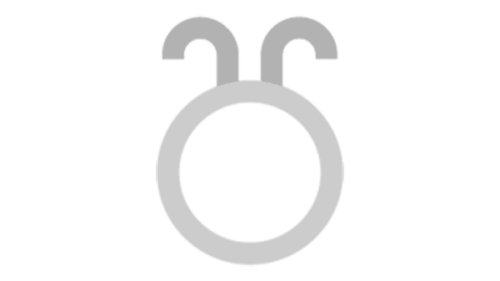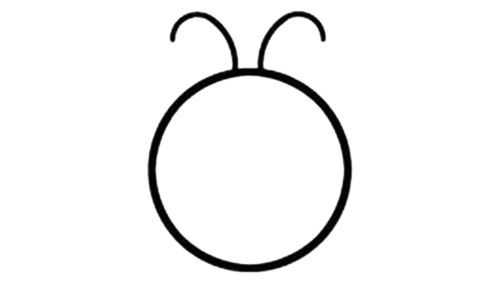Celtic symbols, with their intricate weaves and deep-seated meanings, have always been a subject of fascination and wonder. These ancient motifs, born from the rich cultural tapestry of the Celtic people, encapsulate a world where nature, spirituality, and humanity intertwine seamlessly. Beyond the widely recognized Triskelion and the Celtic Cross, the Celts have bequeathed a legacy of symbols, each with its own unique story and significance. Symbols such as the Claddagh, representing love, loyalty, and friendship, and the Awen, symbolizing inspiration and the essence of creativity, further enrich the Celtic heritage. These emblems, though not the focal point of this narrative, underscore the diversity and depth of Celtic symbolism.
In the heart of Celtic symbols’ meaning lies Eostre, a beacon of renewal, rebirth, and the unfurling of life anew. This symbol, tied to the deity of spring and dawn, Eostre, reflects the cyclic rebirth of the world after winter’s retreat, celebrating the resurgence of vitality and the promise of new beginnings. Traditionally associated with symbols of fertility such as eggs and hares, Eostre is a vibrant testament to the joy and vigor of spring.
Eostre’s significance is manifold, symbolizing not only the rebirth of the earth but also fertility, growth, and the rejuvenation of spirit. It is emblematic of the Celtic belief in the cyclical nature of existence and the interconnectedness of all living things. This symbol found expression in various facets of Celtic life, including festivals, art, and craft, mirroring the Celts’ profound reverence for nature’s rhythms. The significance of Celtic symbols in shedding light on the cultural and spiritual ethos of the ancient Celts is immense. These symbols, Eostre included, acted as conduits for conveying intricate spiritual truths and communal values, bridging the mundane with the divine. Embedded in the fabric of Celtic art, jewelry, and architecture, they offer a window into a world where every line, curve, and knot tells a story, connecting the physical realm with the cosmic order.
The celebration of Ostara, marking the spring equinox, is intrinsically linked to Eostre. This time-honored festival welcomes spring, embodying themes of joy, renewal, and fertility. The custom of Easter eggs, symbolizing new life, is believed to have its roots in the venerable traditions associated with Eostre, further highlighting the enduring legacy of Celtic symbols in contemporary culture.
To further illuminate the multifaceted nature of Celtic symbols, consider the following aspects of Eostre:
- Symbolism: Represents the dawn, spring, and the revitalization of the earth.
- Cultural Impact: Influenced various Celtic festivals and traditions, emphasizing the cycle of life.
- Artistic Representations: Found in Celtic art, symbolizing fertility, growth, and new beginnings.
- Modern Influence: Continues to inspire contemporary celebrations and customs, such as Easter traditions.
- Spiritual Significance: Embodies the interconnectedness of life, nature, and the divine.
Eostre stands as a quintessential embodiment of the cyclical nature of existence, encapsulating the ancient Celts’ deep bond with the natural world. As we delve into the meanings of Celtic symbols, it becomes clear that these age-old emblems harbor wisdom that transcends time, reminding us of life’s perpetual cycles of birth, death, and rebirth, and the eternal link between humanity and the cosmos.
Eostre Tattoo
The allure of Celtic symbols extends far beyond ancient artifacts and ceremonial objects, finding a revered place in modern expressions of identity and belief, such as tattoos. Among these symbols, the Eostre tattoo stands out as a profound choice for those seeking to embody the themes of renewal, rebirth, and the awakening of life. This choice is not merely aesthetic but deeply symbolic, connecting the wearer with the ancient rhythms of nature and the enduring wisdom of Celtic traditions.
Opting for a Celtic Eostre tattoo involves more than selecting a design; it is a personal homage to the cycles of the earth, a celebration of new beginnings, and a tribute to the fertility and vibrancy of life. Individuals drawn to this symbol often feel a deep resonance with its connotations of growth, rejuvenation, and the promise of dawn after the darkness. It’s a visual testament to one’s belief in the potential for renewal and the perpetual motion of the universe.
Moreover, the Celtic Eostre tattoo serves as a talisman, a source of strength and inspiration. It is believed to carry the energies of the earth and the creative forces of the universe, offering protection and encouragement to the wearer. In its intricate lines and patterns, the tattoo encapsulates the complexity of life, the interconnection of all beings, and the eternal cycle of rebirth. Thus, adorning one’s body with an Eostre tattoo is not only a celebration of Celtic heritage but also a profound statement of one’s journey through life’s seasons, a reminder of the resilience and beauty inherent in the natural world.









